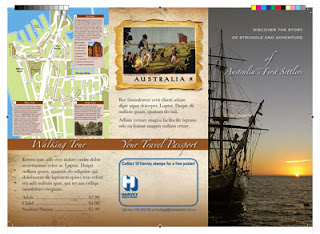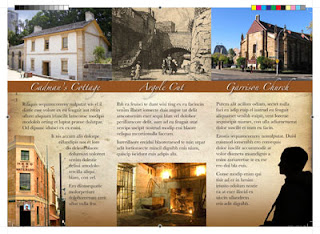BriefWrite an essay exploring the influence of indigenous symbols on the work of modern artists.
Essay: Transformation of Artistic Style
Creation is a process. Every artist has a personal ritual that he or she partakes in, prior to beginning a new masterpiece. This preparation can be in the form of conscious research and observation, or it can be inner transformations and feelings that lead the artist to produce a certain form of expression. Many artists in their quest for inspiration draw upon the creations of those before them, the indigenous artists who worked with mediums traditional to their style of life and surroundings. The works of the indigenous artists have greatly influenced the style and flavour of many visual creators of the 20th century. These works from ancient times demonstrate masterful applications of colour, reflection of profound ideas, and viewer’s involvement and participation in the story.
The relationship between the past and the present is evident in the works of abstract painter Wassily Kandinsky, who gave birth to many captivating works during 20th century. He was highly inspired by the ancient Slavic icons abundant in churches around his beloved Moscow. It is common to associate iconic paintings with Christianity, however the idea of capturing images of significant people came long before Christian religion. This tradition originated in Egypt, where portraits of the dead were placed on the covers of the sarcophagi. At first these were in the form of three-dimensional masks made from plaster, but later they transformed into two-dimensional stylized portraits painted on wood. These funeral masks were extremely powerful in capturing attention of the onlookers by using exaggerated forms and startling colours. Richard Temple describes these creations as “a gaze that speaks directly to us from a world beyond time and the earthly plane.” (Temple 2004, p.16). The purpose was for the viewer to connect with those who were dead, and to share their human feelings of loneliness and hope.
One of techniques employed by the ancient Slavs was the use of brilliant and pure colour tones. The images were generally very large, more than 2 meters high, and they covered the entire area of the wall, drawing the viewer in. This combination of enveloping surrounding with vivid clear colours created an atmosphere of timelessness spiritual reflection and participation. While at university, Kandinsky visited the town of Vologda, where he came in close contact with decorative houses and furniture, traditional folk costumes and numerous churches. After this trip, Kandinsky entered countless Baroque churches and chapels in Bavaria seeking to feed his artistic thirst. He was deeply influenced by this experience, and later he always aimed to recreate this feeling of being in the picture through the bold use of colour in his own works. Figure 1 demonstrates the influence of the traditional Slavic icons on the use of vibrant colours in Kandinsky’s work.
Another striving of ancient Slavs, as well as of Kandinsky, was to bring the observer into the picture, make the person take part in the creation of the masterpiece. The wide-open eyes on the traditional iconic paintings grip the soul of the onlooker and make one stop to consider the questions of life and death. In the words of Kandinsky himself, his motivation was “to let the viewer stroll around within the picture, to force him to forget himself, and so to become part of the picture.” (Kandinsky, Duchting 1991, p 9). Figure 2 shows one of Kandinsky’s earlier works, which displays his arrangement of shapes and colours not as objects would be found in the natural world, but more as characteristics of our human thoughts, swirling and overlapping each other, of intangible and impermanent nature. Just as the aboriginal artists, Kandinsky wanted to express the essence beyond the visible. He felt the colours, felt the world through his mind’s eye, and he expressed his vision through increasingly more abstract style of painting.
Kandinsky’s late works demonstrate complete separation from realistic images, and full exploration of expression of the outside world using symbolic representations. Figure 3 illustrates this transition to pure abstraction. Ancient Egyptians used hieroglyphs to record the local laws, religious belief systems, and military achievements. Egyptian pictographs have become almost synonymous with the stylized representation of the surroundings and events. In one of his last works, “Composition X” (Figure 3), Kandinsky used this powerful metaphor to eliminate any doubt in the mind of the viewer of his intention of displaying abstract form.
“Every revolution has its historical causes and its inner necessity” (Anselm 1993, p3). The abstract art movement is the personification of these words. From the burial traditions of the early Egyptians, to the iconic works of ancient Slavs, to the pure abstract arrangement of shapes and colors in Kandinsky’s late works, the influence and the transformation are evident. Kandinsky is thought to be one of the first to break the ties with Realism and move into the world we now call “Modern Art.” To him, as to his colleagues from centuries ago, art was about expressing emotions and mystical inner processes, rather than portraying anatomical and biological accuracy of objects. He said so himself: “When you create a work of art, you create a world.” (Anselm 1993, p5.)

 Figure 1: Influence of Colour
Figure 1: Influence of Colour Figure 2: Images As Thoughts
Figure 2: Images As Thoughts Figure 3: Pure Abstraction
Figure 3: Pure AbstractionAnselm R., P. 1993. Kandinsky, Park Lane, London.
Duchting, H. 1991. Wassily Kandinsky, 1866 – 1944, A Revolution In Painting, Benedikt Taschen, Berlin.
Russia The Great: Where We Came From
Available: http://russia.rin.ru/guides_e/10667.html
Temple, R. 2004. Icon: Devine Beauty, Saqi Books, London.















































